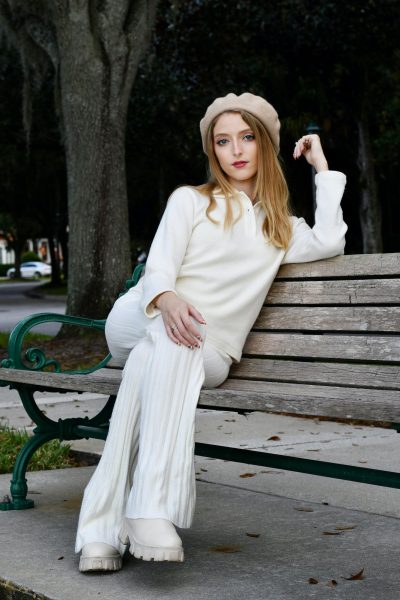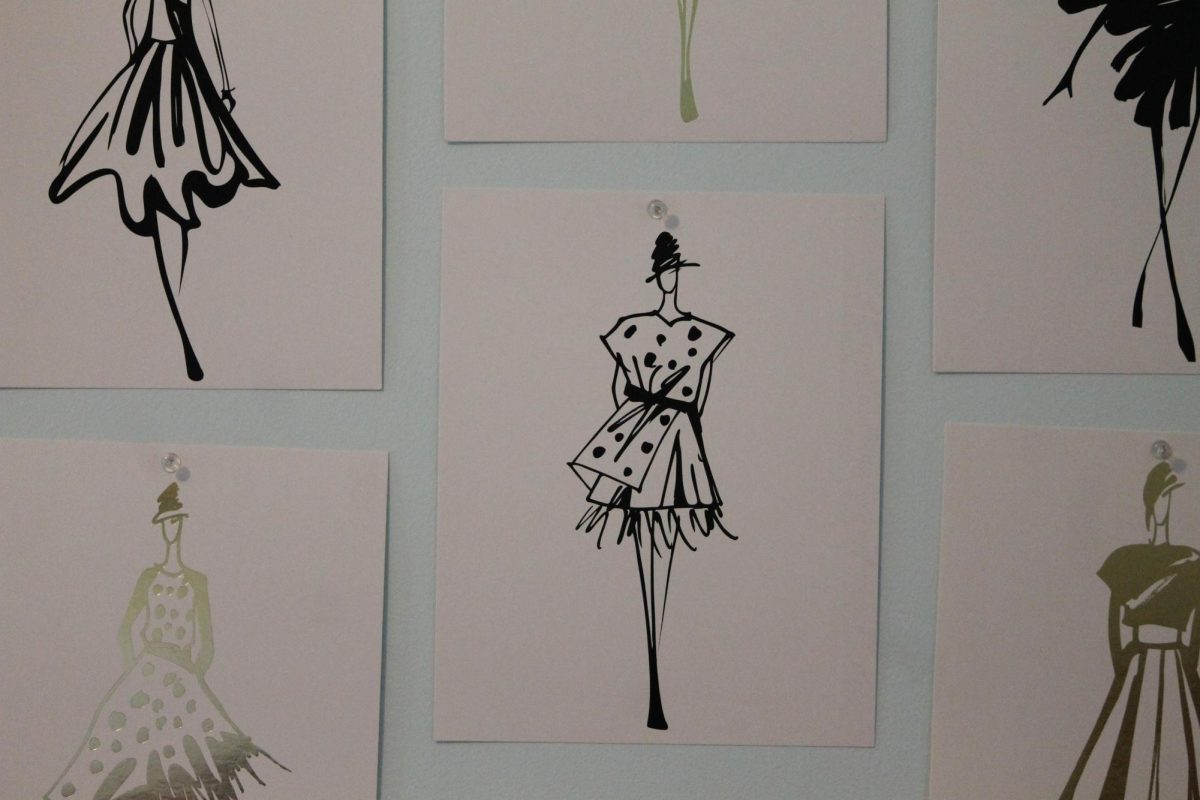Parents always complain about a messy room. With clothes scattered everywhere, one might safely assume that a messy room can reveal a hidden form of artistry, often associated with the emergence of fashion, especially among teenagers. In the age we currently live in, fashion is becoming quite emphasized among the youth. So much so that teens tend to adopt the style that seems socially accepted: simply put, they’ll do anything to fit in.
However, despite the desire to fit in, style trends also become simply a large inspiration that people take up out of interest. For instance, look at the excessive oversized clothing that has been exhibited all over the media among young people or even the temporary boom of Fjallraven Kanken bags back in 2019. This raises the question of whether fashion has become something based on the uniqueness of trends or simply the popularity of them? In most societies there are the majority of people who dress “normally,” but what is normal exactly? You could define it as anyone that either wears outfits that require them no thought or just wears clothes that don’t draw the eye or attention of others. However, on the same note, it also depends on who is wearing the clothes and how they wear them. While body type and accessories can influence how an outfit is presented, solely concentrating on the basic concept of choosing clothing might limit the pool of individuals considered to have a unique style. That may narrow down the selection of people who many would consider to have a unique style.

On the other hand, there are those few people who stand out significantly, the people who have acknowledgedly unique or less common fashion sense. Could it be those people who throw on a diverse selection of outfits, much like what some may consider the ensembles that Adam Sandler wears, and yet somehow make it look coordinated? Or those who elegantly embrace simplicity with accessories, resembling the girl in the image at right wearing an all-white, clean outfit with a touch of elegance? Or even the individuals who dress uniquely enough to capture one’s attention or stand out even the slightest bit with their choice of patterns, colors, or coordination? Many may see fashion to only be true or real representations when it is unique enough to be differentiated from other outfits. Though can’t it also be possible that most people have the same taste in fashion?
There are so many questions that can be asked. Might we gather that there are indeed quite a few who’ve observed a change in the idea of style? Grace Donahue, author of an article entitled, “Is my personal style even mine anymore? Is it Just Me Or’, spoke similarly on the topic. Donahue wrote, “It’s so easy to get sucked into a cycle of following these different inspiration pictures and the creators attached to them, molding your wardrobe to fit the confines of what someone else’s style is ….[strolling] around the city forces us to look at what everyone is wearing. Too often, this leads us to compare our own style to others….where do the trends stop, and I begin?”
That also goes to show for style. Modern fashion and style are increasingly comparative, with social media playing a significant role in encouraging younger generations to compare themselves to others and fostering a sense of dissatisfaction. The biggest problems today, which even I can relate to, is admiring someone else for whatever they have and then trying to be like them. As we lose ourselves in the world of self-effacement, we lose the expression that is supposed to be portrayed through fashion and the entire field of design.
With all of this in mind, however, can we really say that this problem didn’t always exist, even if not as strongly? In reality, people can’t escape the influence of others’ styles, whether it is found on the streets or in social media. It appears that what’s tarnishing the image of fashion is the focus on trends rather than a genuine interest in the style itself, as Donahue pointed out.
There’s a deeper insight on this idea of fashion. If we look to those who have seen a large range of trends and categories of people, we may see that there’s certainly been a change in times, but maybe not all is lost. Adrienne Jones, a Professor in the Fashion Design Department at Pratt Institute said, “As soon as fashion houses [clothing brands] started branding themselves, I feel like they lost a lot of creativity…regarding the luxury designers, there are a lot that can’t even afford designing to the standard of trends, which is where the branding comes in….There are some who are only following the trends, and there are some who pave their own way. I think it just depends on how comfortable you are with expressing yourself…I can definitely say that it was not always like that. People were striving a lot more for their individuality, and social media has had a big hand in changing that. Like, everybody is doing the same thing.”
Publication seems to be the biggest trigger of a loss of creativity. When the internet was introduced, people’s reliance changed entirely and that included their level of creativity and thought process. Jones highlights the fact that with it, people have changed; they’re wedded to trends and therefore compelled to mimic them. In the case of fashion brands, once a brand goes public and creates a platform, it may often serve trends and work to appeal to the media because it is what feeds their brand. Fame feeds brands just as it feeds the ego of regular people.
Rayjhair Grant, a current sophomore at Collegiate Academy of Math and Science provides an interesting perspective. “I believe people are learning how to further express themselves through clothes, and so many people are finding their own aesthetic…however, there are still a lot of people that try to simply be trendy in their choice of clothing. Some don’t think for themselves and buy things, just because they see others with it and convince themselves they like it,” Grant said.

Grant brings up the most timely idea that numerous people, especially children, convince themselves that they like a certain style or piece of clothing simply for the trend.
It is clear that the path of fashion is more than just trends, but it is once again still the character of oneself. By choosing the unique path, creating things that look good in their own form, that shows persona. Nevertheless, let us bridge this gap. Trends are many things, as are people. There do exist people who are both more than trend-setters and trend-followers, people who use these trends and add their own twists on them. Or people who take these trends because they actually like them.
“There are some who are only following the trends and their are some who pave their own way,” said Adrienne Jones, a Professor in the Fashion Design Department at Pratt Institute.

